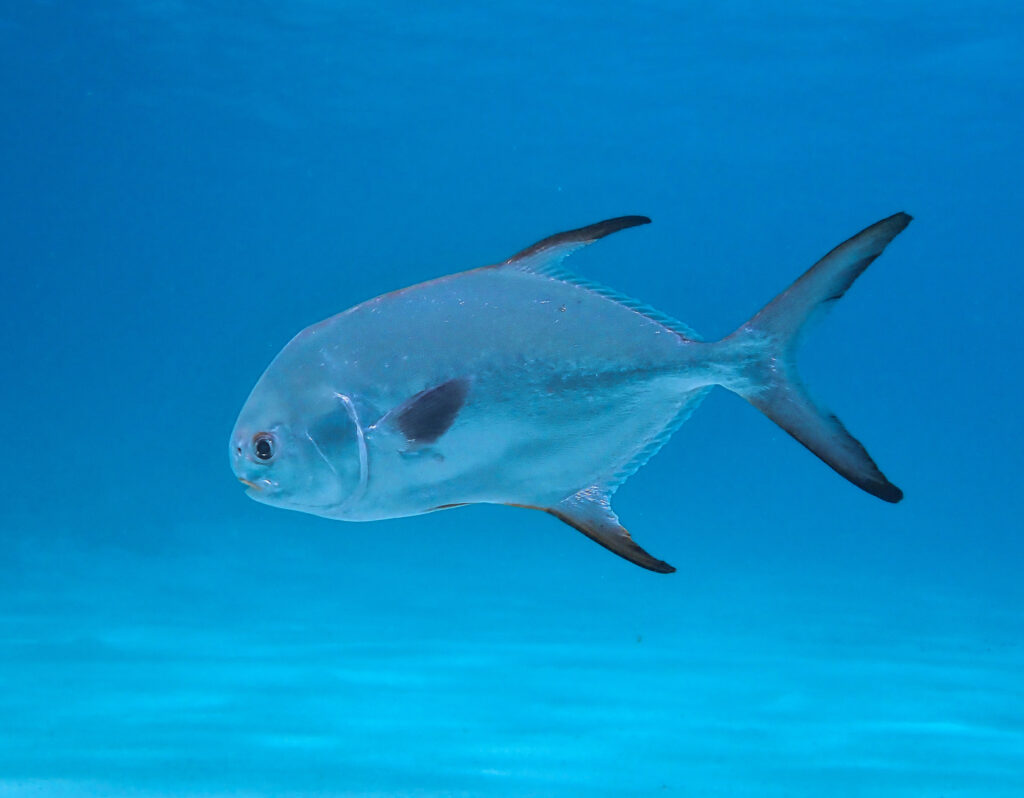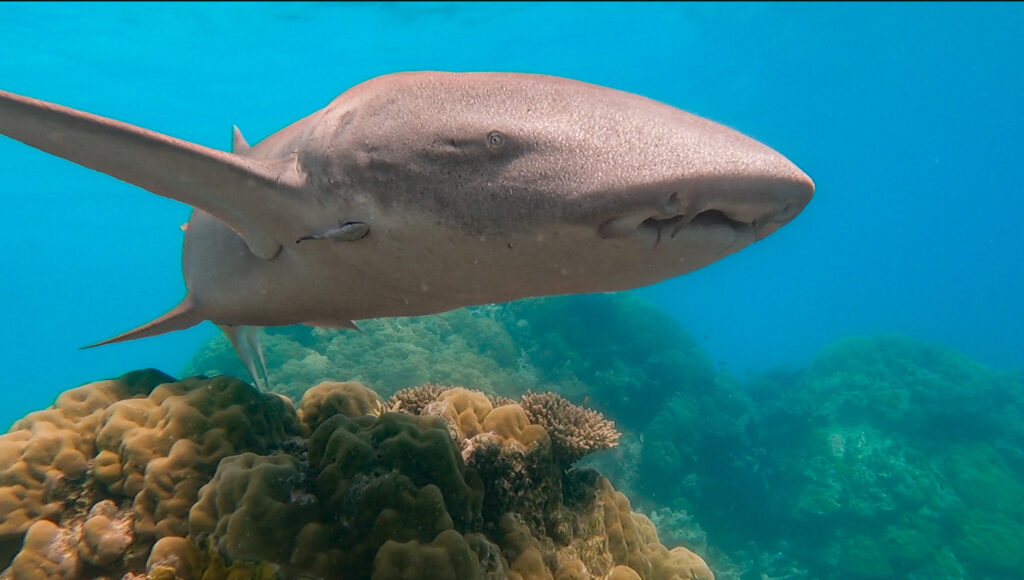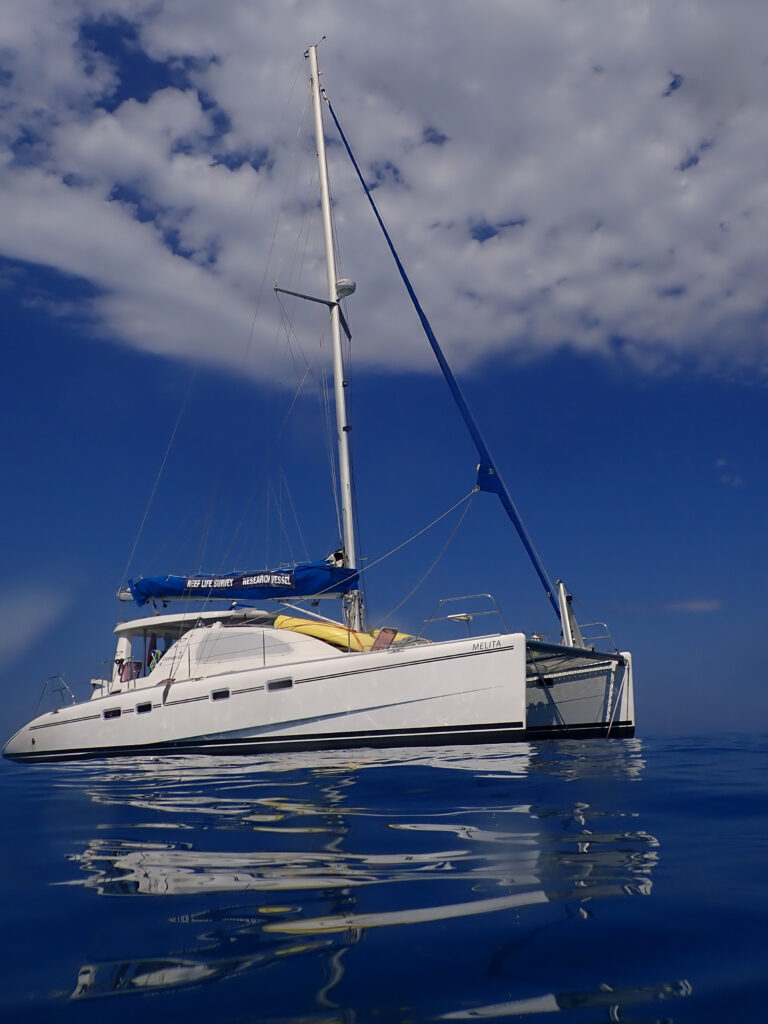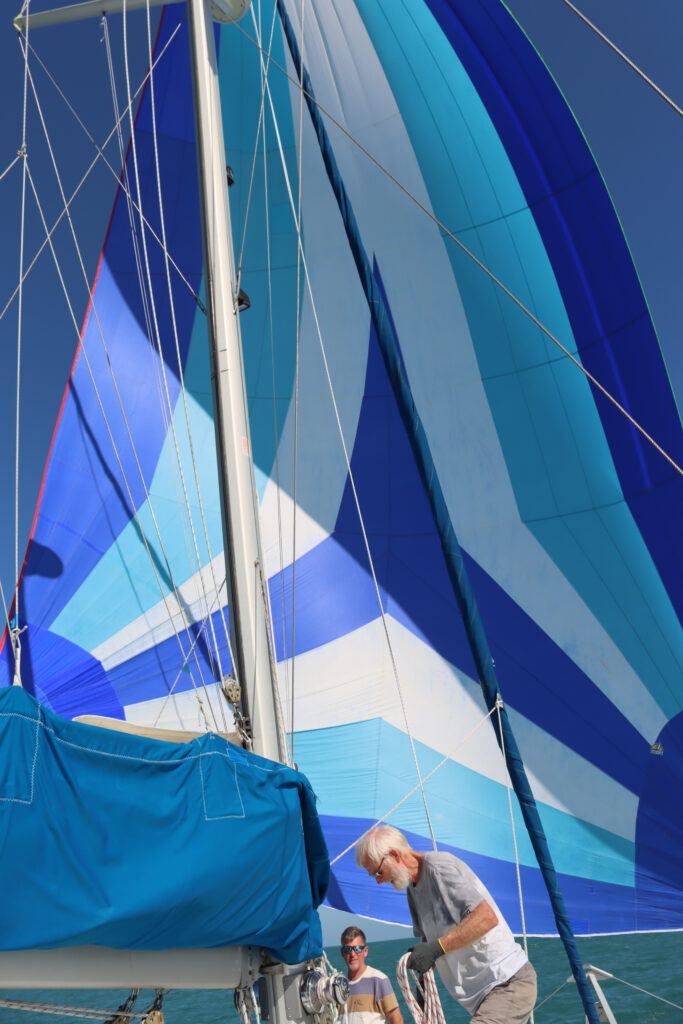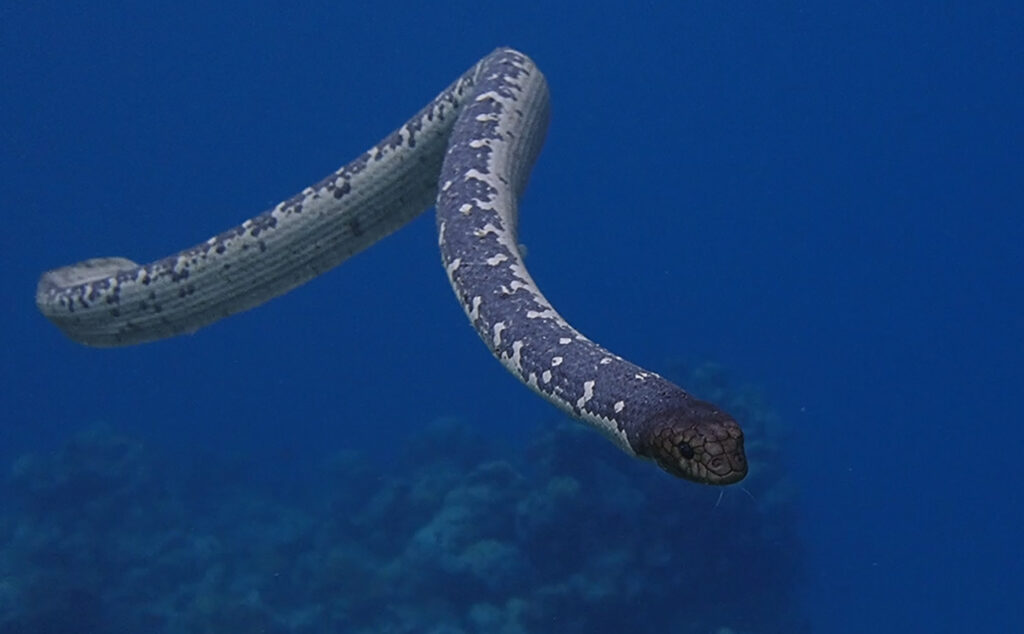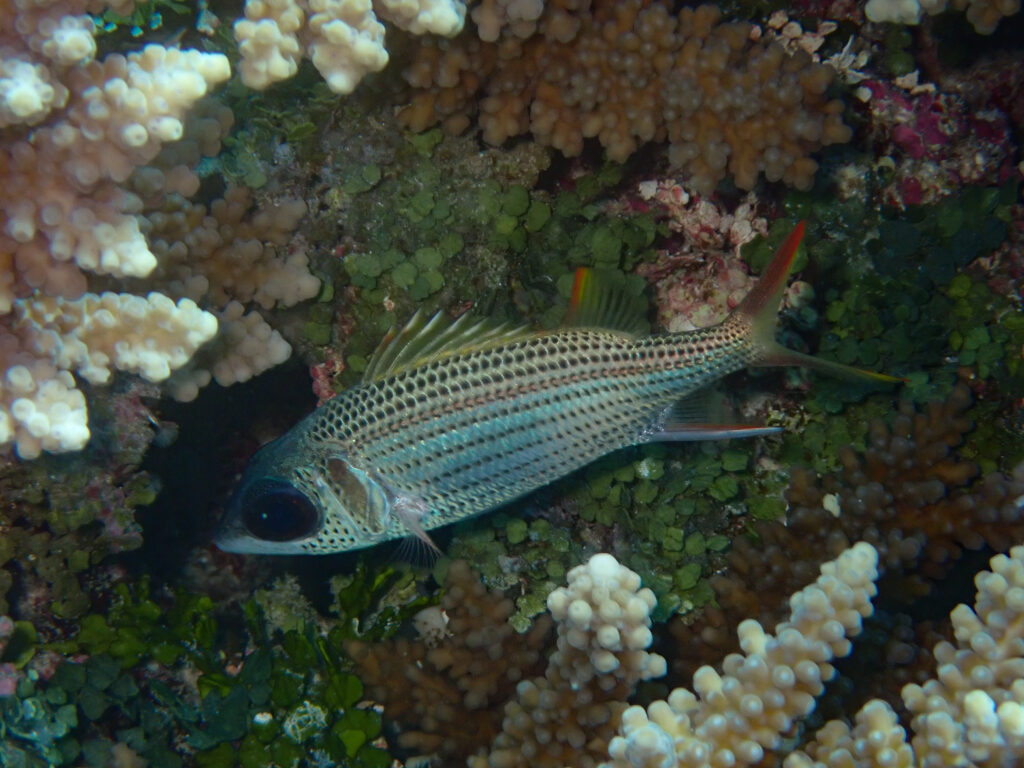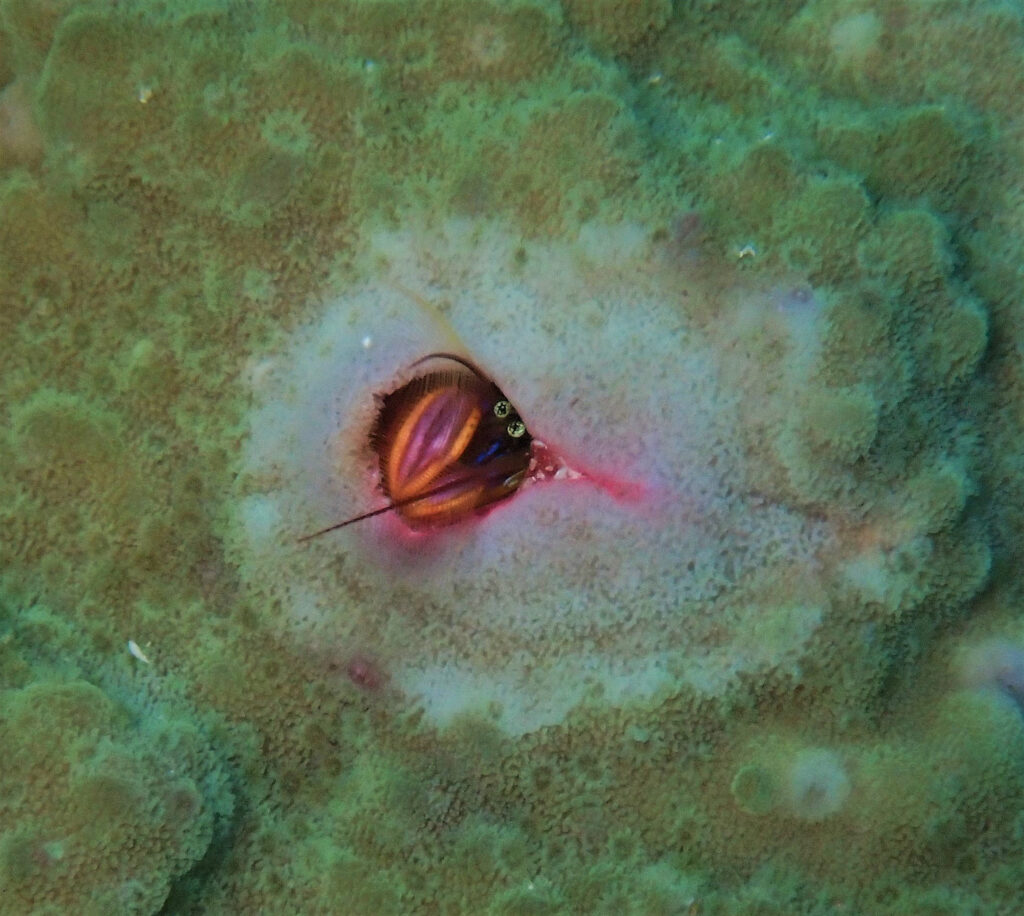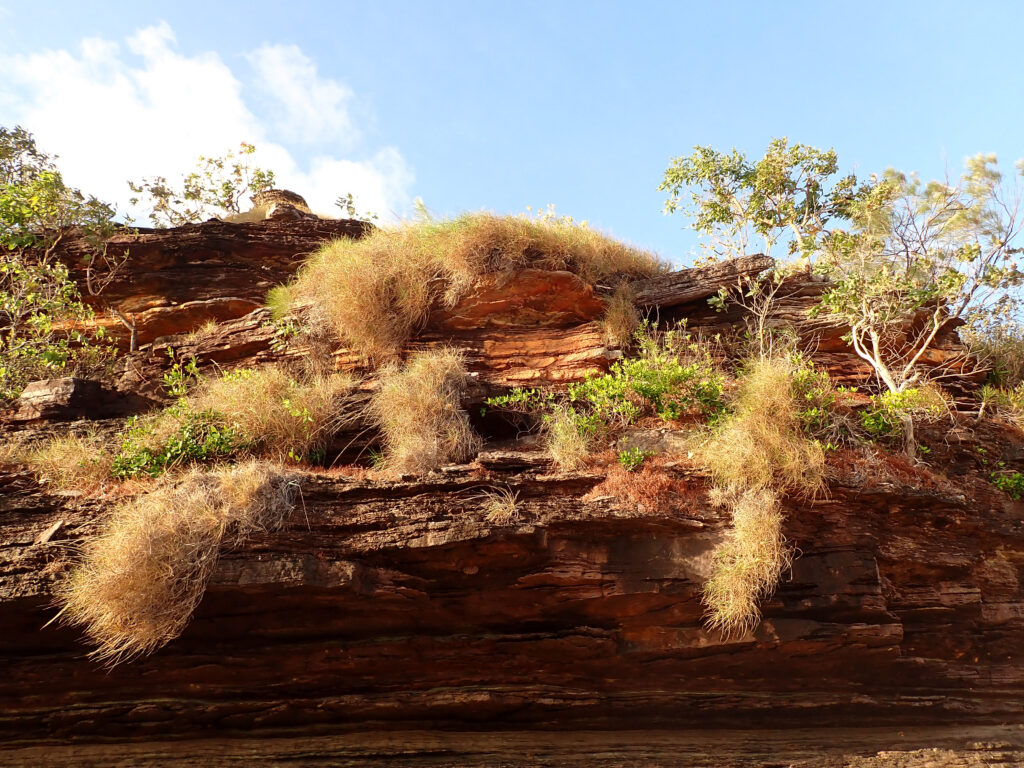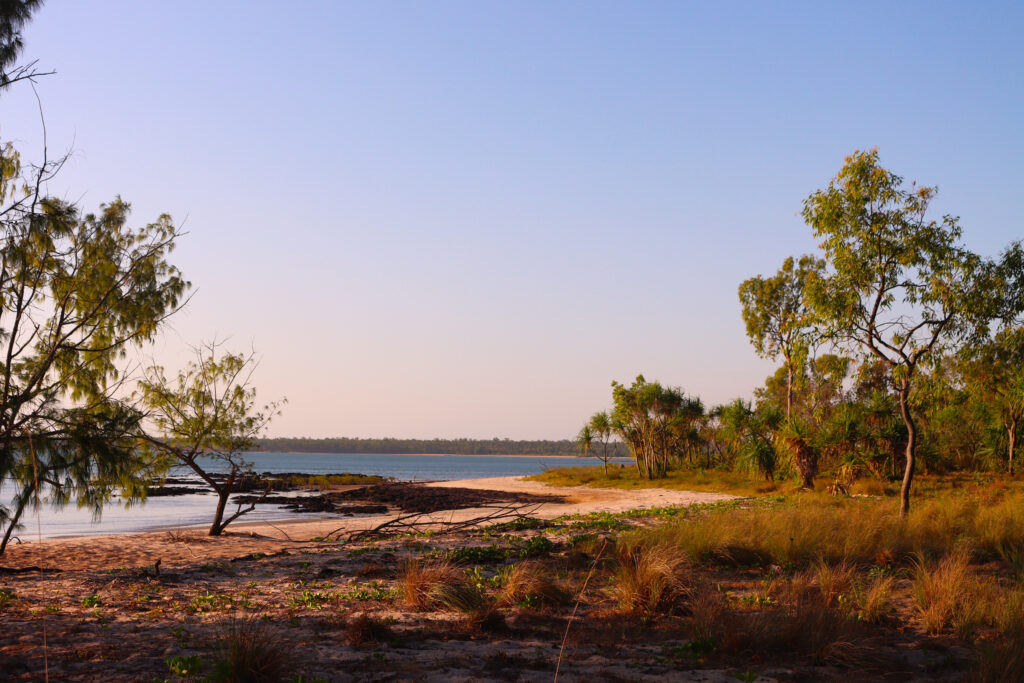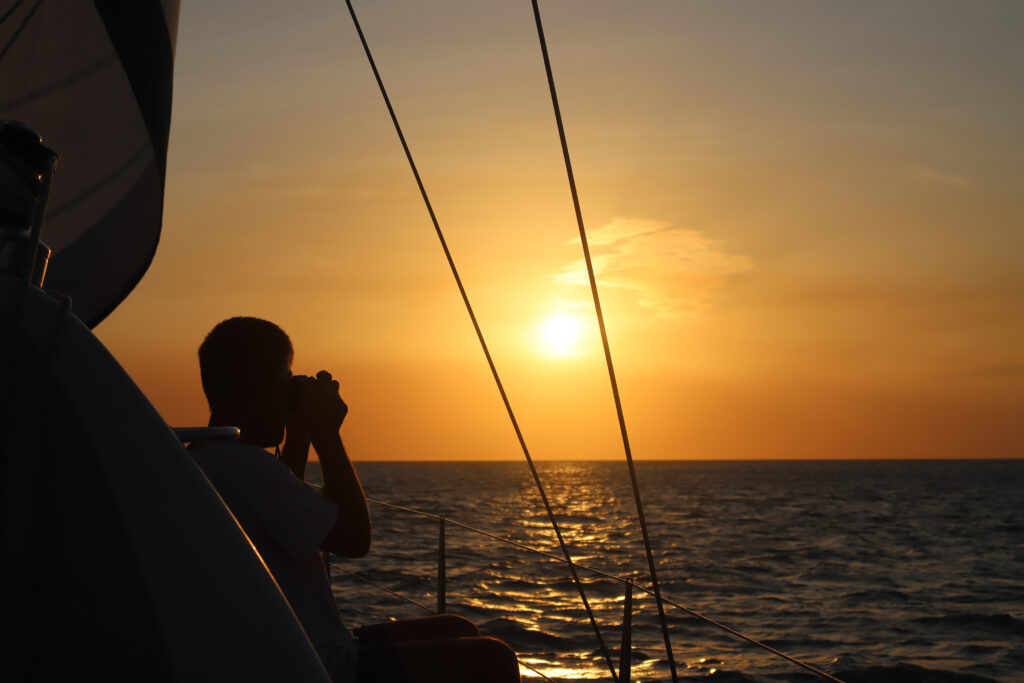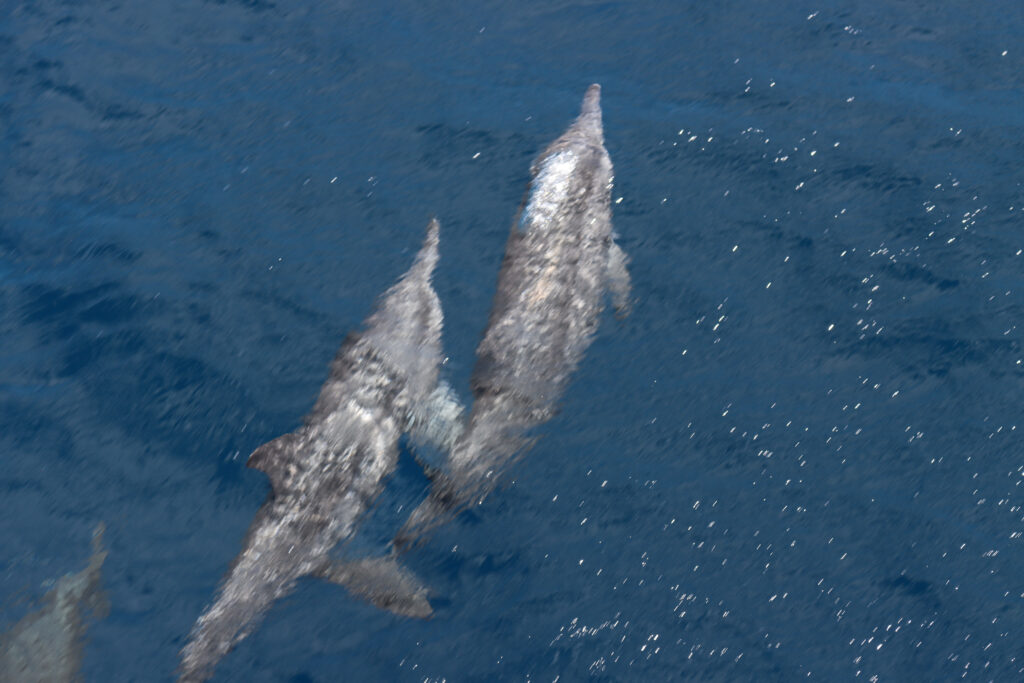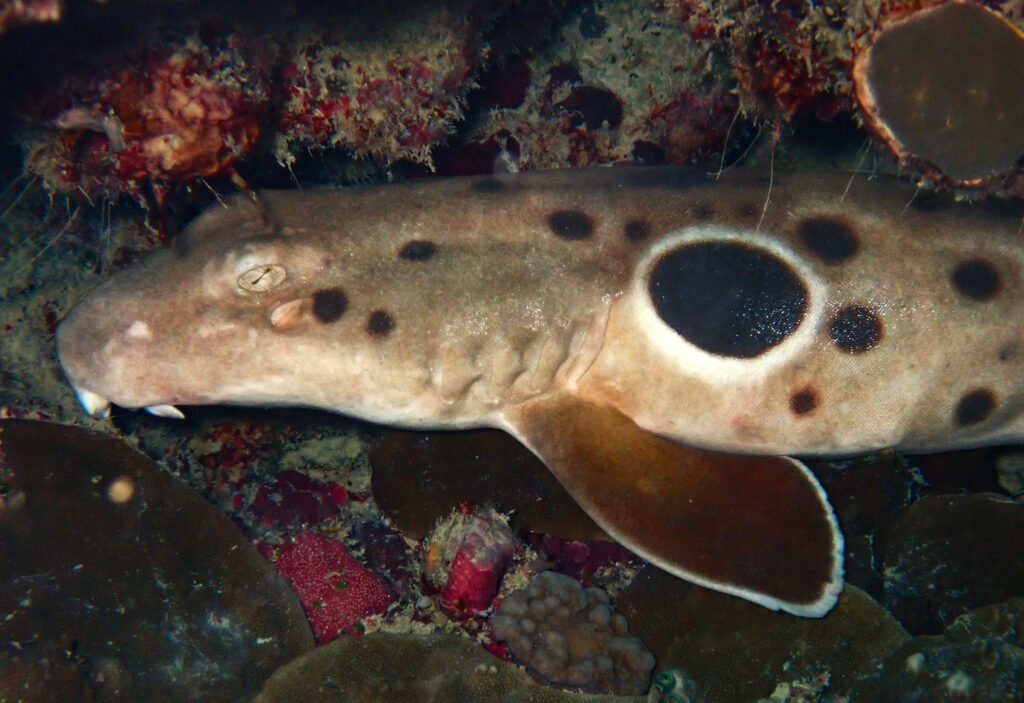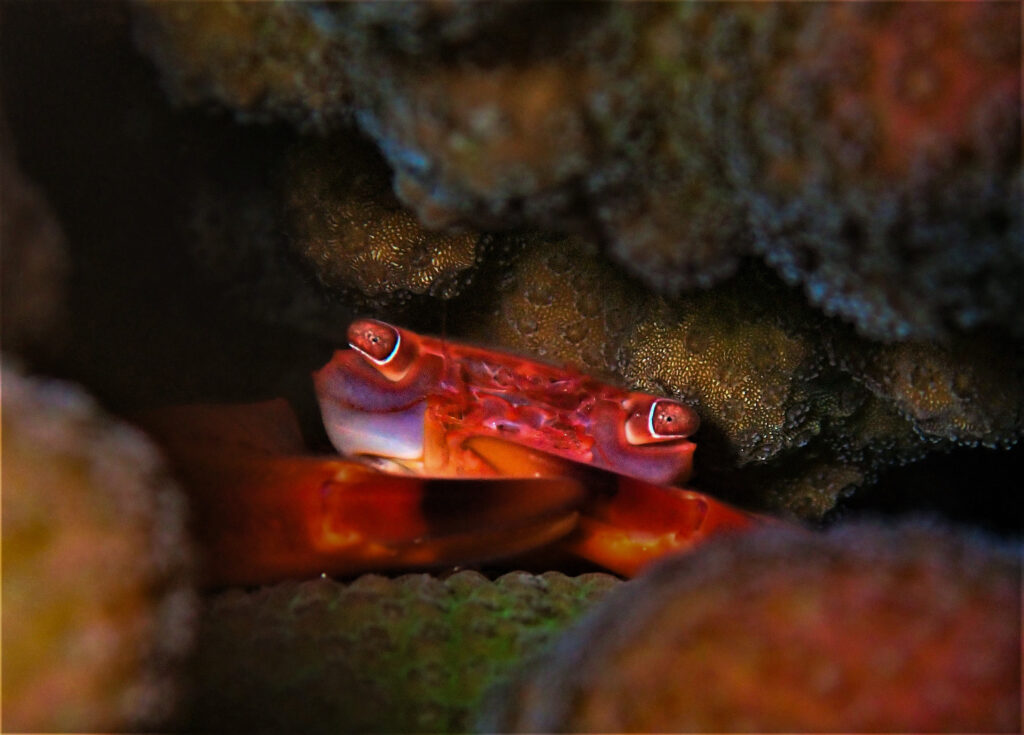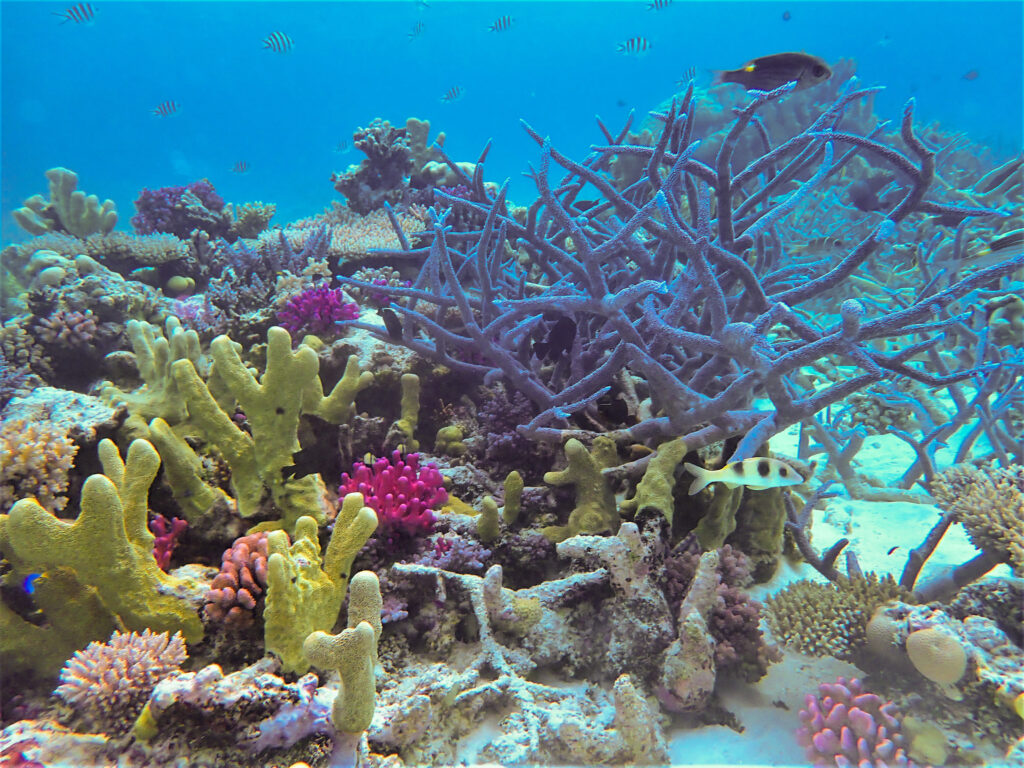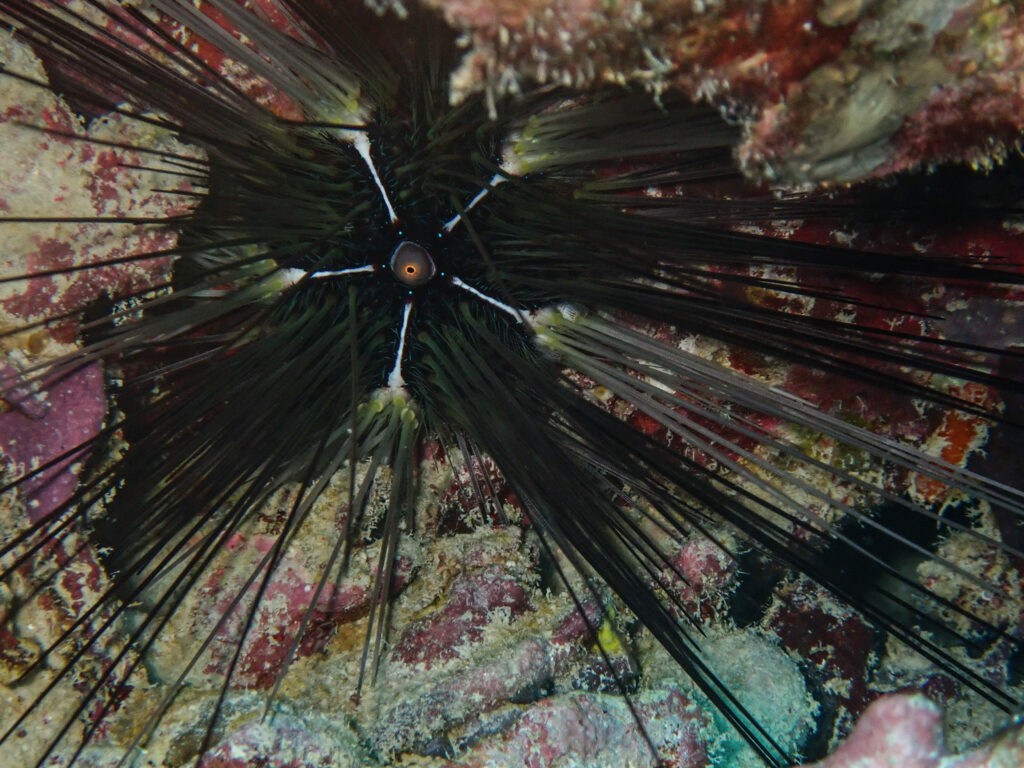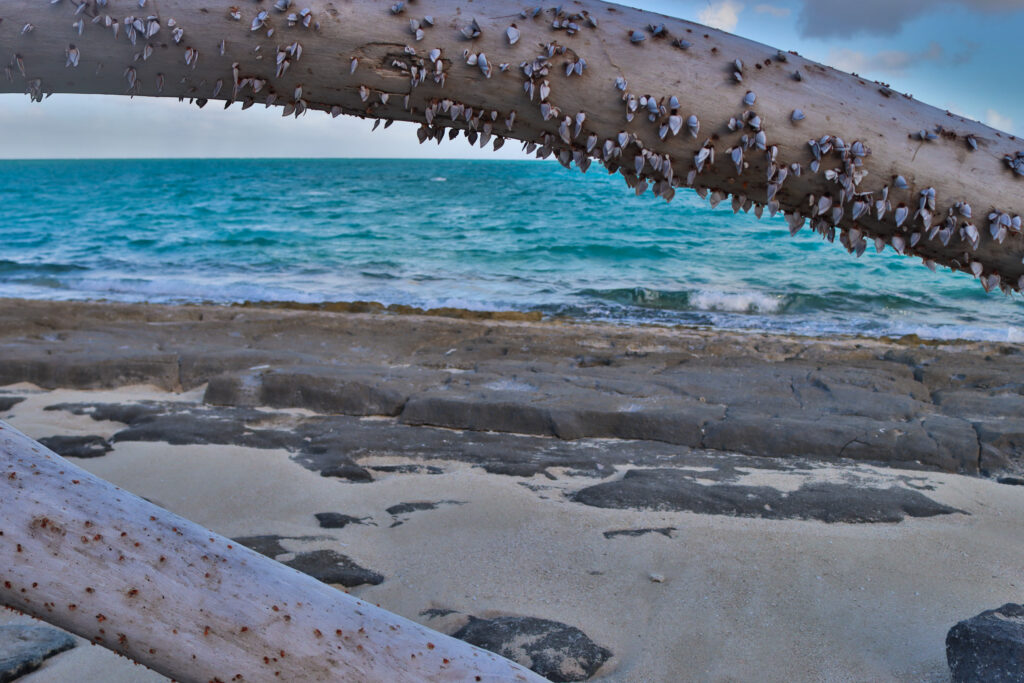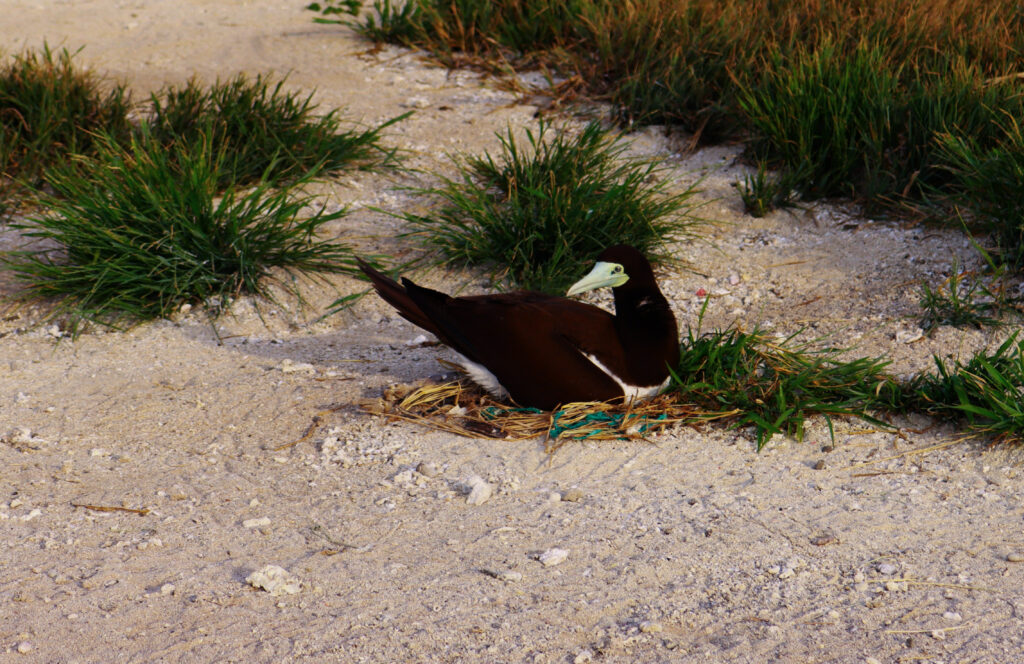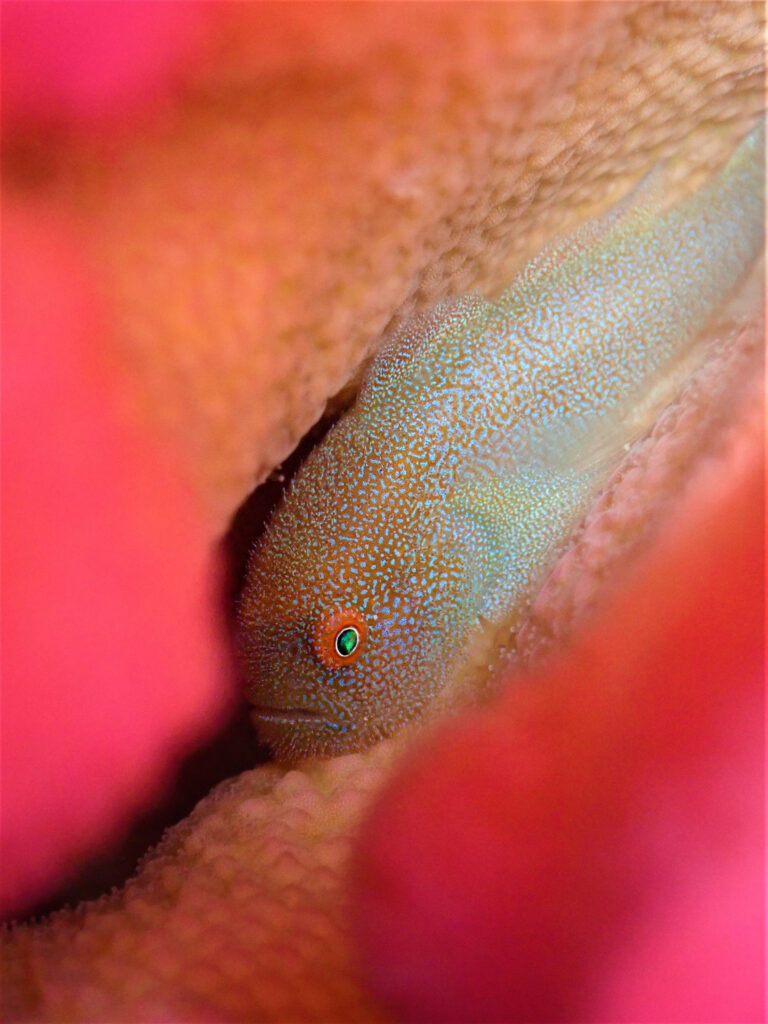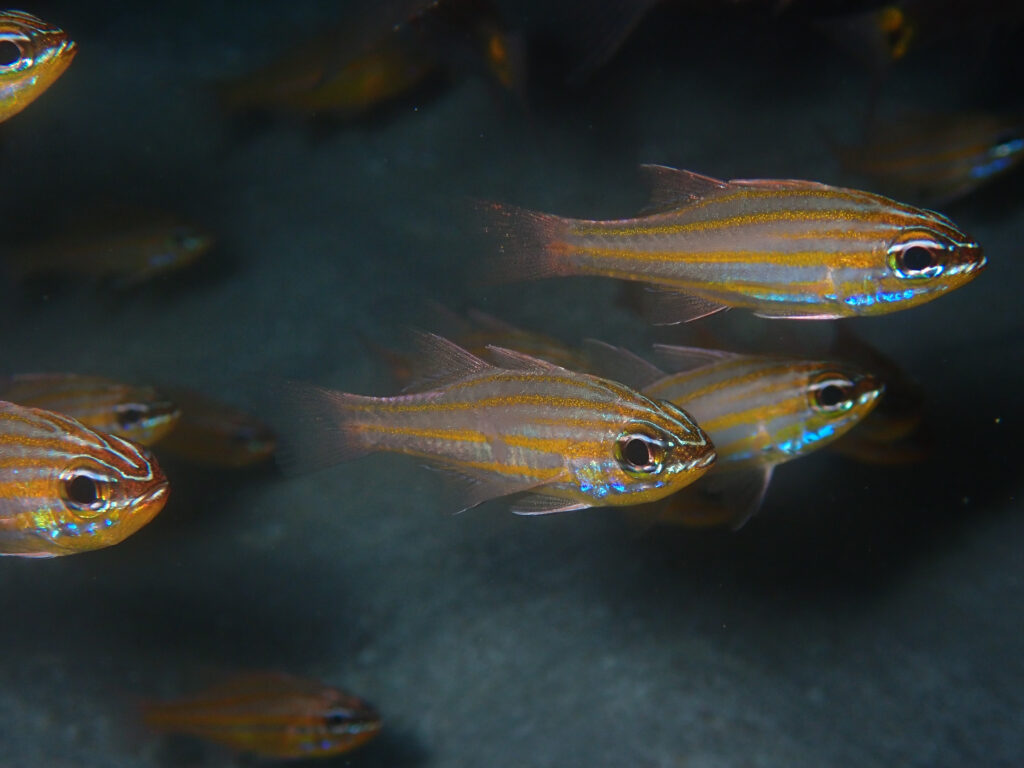Long-time RLS skipper, Dusty Shields (TAS), newbie RLS diver, Shenae Willis (TAS), and long-time RLS diver Kevin Smith (WA), all flew up to Waibene/Thursday Island in the Torres Strait to join Kirsty for a tropical far-north expedition out to Ashmore Reef and then west to Gulmerrogin/Darwin.
With Melita fully restocked, (thanks lovely Ebony for the helping hand!), we embarked at 3am to kickstart this leg of Melita’s lap of Australia. We were due for more swell and winds along the way, but keen and ready to survey.
Zuizin Island
Our first dive destination was Zuizin/Halfway Island located 70nm northeast of Thursday Island. We had a couple of shake-down dives to get temperate RLSers Shenae and Kevin acquainted with the north-eastern tropical species of the Great Barrier Reef. The underwater scenery was impressive, with a lot of complex architecture and structure. There were huge coral boulders, and lots of plating, foliose, bushy, and stony coral colonies around. Method 2, the invertebrate and cryptic fish component of the transect, was very cool and diverse! Giant clams (Tridacna sp.) and long-spine urchins (Diadema setosum) were very abundant with 120-130 Tridacna crocea and 50-60 urchin species per transect. The striped eviota (Eviota sebreei) and the white-striped pygmy-goby (Eviota guttata) were out in numbers, with around 15-20 individuals per transect. We saw a few crown-of-thorns sea stars (Acanthaster planci) that were counted both on and off transect, with scarred corals as evidence of their destruction.
Our first anchorage marked our first technical setback; the automatic clutch release on the anchor winch stopped working! This was not a major drama as we could use the manual release and brake to lower the anchor, but nevertheless Dusty ordered a part to fix this issue to be delivered to Thursday Island, and we crossed our fingers that it would arrive before we got back to TI in ten days.
Mer
We set sail for Mer/Murray Island; the easternmost island in the Torres Strait, located about 120nm east of Thursday Island. We anchored in the sand just off the fringing reef which drops off quickly, plummeting to over 60 meters depth not too far off the shore. We headed ashore to visit with Elders from the local Melanesian Meriam tribes; the Komet, Zagareb, Meuram, Magaram, Geuram, Peibre, Meriam-Samsep, Piadram and Dauer Meriam people who are the Traditional Owners and ongoing custodians of the island. In speaking with Traditional Owners and their Elders, we were able to gain their permission to dive at Ashmore Reef the next day. We stayed overnight and would set sail in the morning.
When it came time to haul anchor, the winch stopped working entirely – we could no longer use the remote! 60m of chain had to be hauled in manually – talk about hard work first thing in the morning! Our plans for Ashmore Reef were thwarted, and for a moment we thought the entire trip would be delayed by a few weeks. Dusty made some calls for parts while we had some reception, and we sailed back to Thursday Island. This was about a day's sail or more in the wrong direction! But as luck would have it, the part we had ordered a few days prior had arrived in TI. We were ready to sail 130nm to Ashmore Reef, again. It cost us 6 full days in surveying but – silver linings – the wind had dropped to around 10-15kts making the sail there more comfortable!
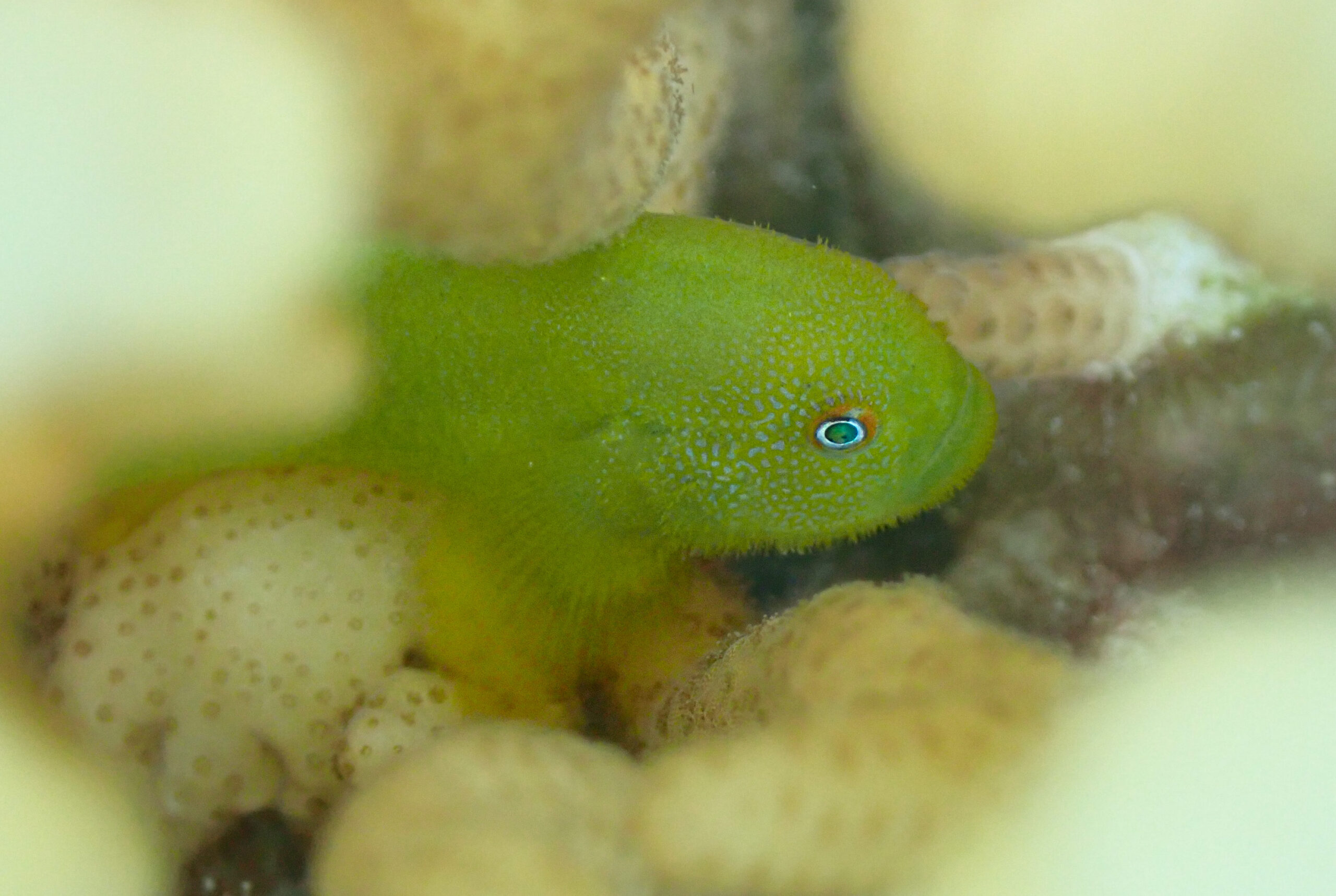
Ashmore Reef
Our first dive after the delay was very much welcomed by all aboard! Visibility was 40+ metres, the water was warm, the coral was healthy and beautiful, and life was abundant. We had near-perfect surface conditions in the lagoon for most of the duration. We dived walls, bommies, and coral gardens – all of which were fun! We stayed here for 6 wonderful days completing 10 surveys and observing so much. Each afternoon after diving and data entry was complete (or at least mostly complete) we had a sunset beer, watching the sun cast magical yellows, oranges, pinks and reds across the water during its descent.
A favorite dive was in a coral garden within the lagoon. The area had a lot of staghorn corals and boulder corals all over, with a large sandy patch in the middle. There were hundreds of damsel fish, wrasse and parrotfish everywhere we looked. Schools of goatfish swam around and by us, with the yellowstripe goat fish (Mulloidichthys flavolineatus) schooling in numbers of around 40, and the goldstripe goatfish (Mulloidichthys vanicolensis) in schools of around 50. Hiding within the staghorn colonies were 40+ juvenile to intermediate sized silver squirrelfish (Neoniphon argenteus). Under ledges there were schools of five-line cardinalfish (Cheilodipterus quinquelineatus) and yellow-striped cardinalfish (Ostorhincus (formerly Apogon) cyanosoma). We were delighted to encounter a hundred strong school of stunning gold-spot seabream (Gnathodentex aureolineatus), as well as three white tip reef sharks (Triaenodon obesus), two golden seasnakes (Aipysurus laevis), and gorgeous snub-nose darts (Trachinotus blochii). Other sightings elsewhere were big painted crays (Panulirus versicolor), tiny coral-dwelling hermit crabs (Paguritta sp.) and coral gobies (Paragobiodon spp.), tawny nurse sharks (Nebrius ferrugineus), silvertip sharks (Carcharhinus albimarginatus), and the list goes on. Needless to say, surveying Ashmore was totally amazing. We stayed under for hours counting fish and invertebrates and just loving life.
Halfway Back & Zuizin Island Part 2
We didn’t want to leave Ashmore Reef, however, all good things must come to an end and it was time to make our way back to cross the Gulf. We sailed back to Zuizin/Halfway Island for an overnight stop as it was Kevin's birthday! Shenae and Kevin went for a fun dive, whilst I made some brownies! We shared a nice bottle of wine with dinner to celebrate. The next morning we completed another new site, again a beautiful dive, and were lucky to have epaulette sharks (Hemiscyllium ocellatum) on transect.
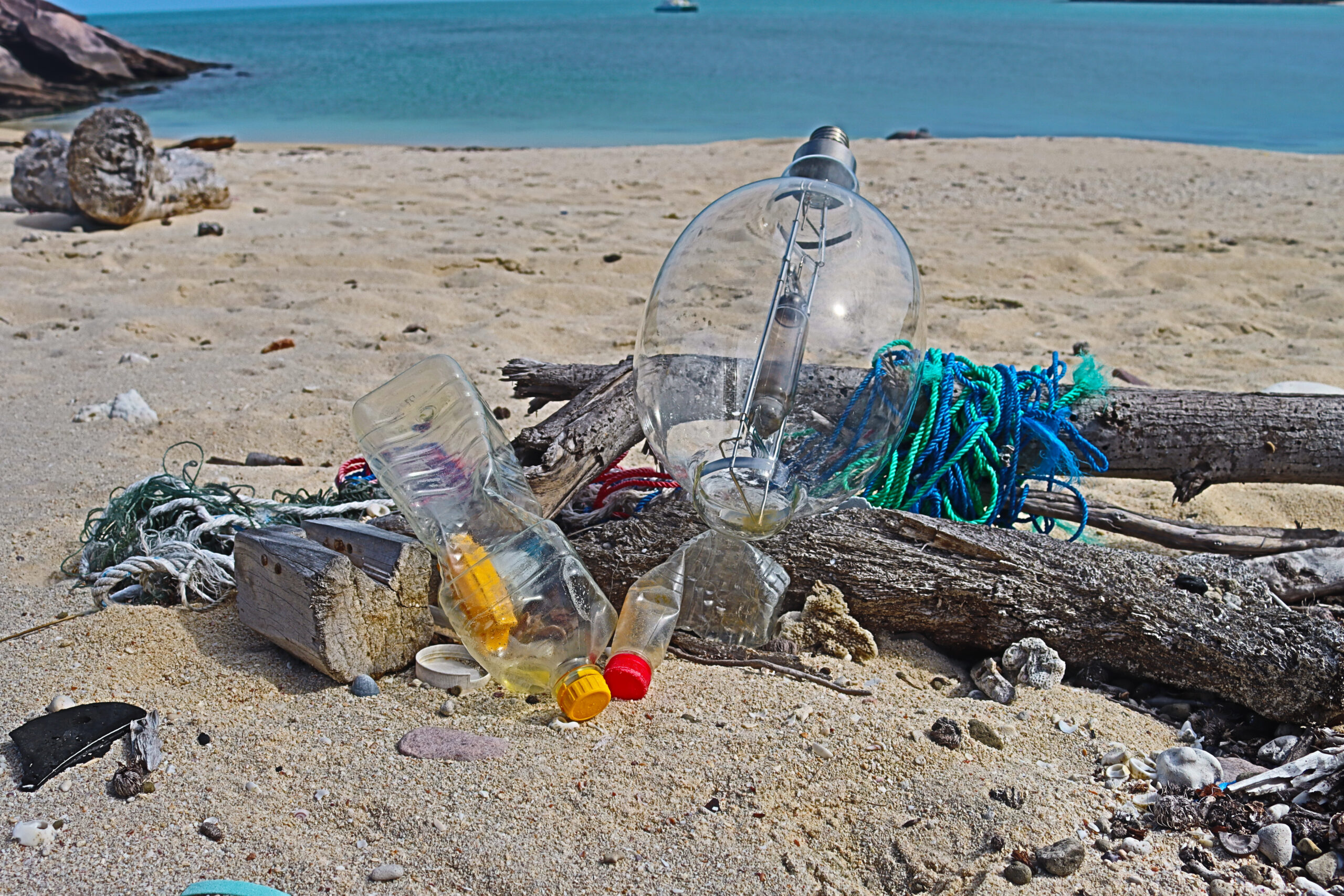
Sailing the Gulf of Carpentaria
We arrived in TI, quickly collected some parts, (I had a quick beer with my friend), and then we sailed into the sunset, past the stunning island scenery of the Torres Strait. After a couple of days at sea, surrounded by blue, with decent swell and winds, we arrived at the Wessell Island Group. We anchored in a calm bay and awoke to a stunning sunrise. On filming this (or trying to) my GoPro decided it would take a leap into the murky waters. Shenae and I put a shot line down and descended into 1m or less visibility, using a search pattern to try and find it! Unfortunately without any luck, we had no choice but to abandon it.
We explored some of these secluded white-sandy beaches with stunning red rocks and cliffs finding marine debris scattered around, including a giant lightbulb, fishing line, lighters and plastic bottles. It was saddening to see such a remote area affected by marine debris, particularly as Wessel Marine Park protects inter-nesting habitat for turtles, and is partially overlapped by Dhimurru Indigenous Protected Area. After the Wessels, we faced some unfavorable dive conditions so we headed closer to land and towards Darwin.
The sail from Thursday Island to Darwin was approximately 760nm, taking us around a week to arrive. As we closed in towards Darwin the wind had dropped enough to raise the spinnaker. We sailed slowly and peacefully into port, appreciating the full moon rise. We anchored and tendered over to the Dinah Beach yacht club for a celebratory beer (or three). This leg was an interesting one, with beautiful diving, the scare of a cancelled trip and some boat issues, but we persevered and saw some wonderful marine life, creating memories that will last a lifetime. We sailed around 1,200nm in total and completed around 15 surveys.
